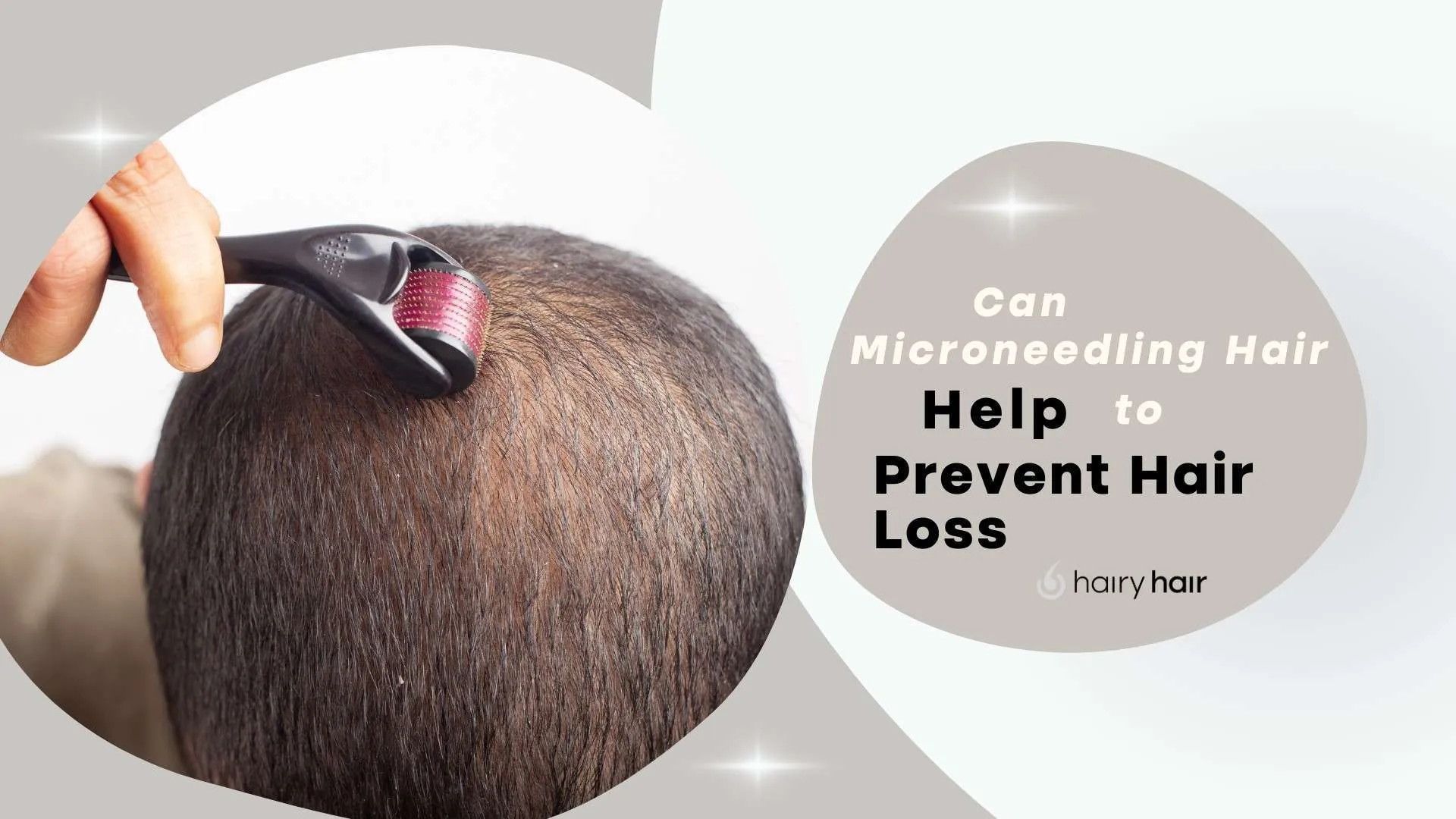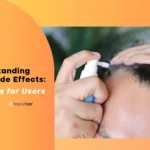Can Microneedling Hair Help to Prevent Hair Loss?

Microneedling, or skin needling, is a cosmetic treatment that helps to reduce the appearance of acne scars, stretch marks, wrinkles, and skin discolouration. While originally developed as a scar treatment during the 1990s, it can also slow the signs of ageing, helping your skin look brighter and younger.
The procedure uses a derma roller, a tool with small needles, to create micro-abrasions, or minor injuries, across the skin. This encourages collagen production and is therefore also used to stimulate hair growth on the scalp. But is it effective in preventing hair loss?
Keep reading to learn how microneedling works and whether it can stop hair loss in its tracks.
Can Microneedling Stop Hair Loss?
While microneedling can prevent thinning, it only helps to stop specific types of hair loss – that’s why the root cause should always be identified before starting any new hair growth treatment.
For instance, microneedling won’t slow hair loss due to a nutrient deficiency; you’ll need to include more of that vitamin or mineral in your diet, or consider taking supplements.
[elementor-template id=”9678″]
However, microneedling can be effective in treating androgenetic alopecia. This is a genetic condition that causes pattern baldness, starting with a receding hairline and thinning across the scalp. Androgenetic alopecia affects between 30 and 50% of men by the age of 50.
Microneedling enhances the health of hair follicles by boosting the scalp’s production of collagen and elastin. These compounds create amino acids that build key proteins like keratin, the main component of hair. The treatment may also thicken thinning hair by inducing stem cells, which regenerate the hair follicles to restore growth.
In some cases, microneedling may help alopecia areata, an autoimmune disease that causes hair loss in small, random patches.
Although the disease can’t be completely eliminated, dermatology research has shown that hair loss can be managed with a combination of microneedling and a topical corticosteroid (an anti-inflammatory steroid medication).
How Microneedling Works
Microneedling is a minimally invasive procedure performed by licensed medical professionals. Dermatologists, doctors, registered nurses, and cosmetic surgeons will follow these steps:
- Around 45 minutes before the procedure, a topical anaesthetic will be applied to numb the treatment area and reduce any pain you may experience.
- The practitioner will then push the derma roller, a handheld device, across your scalp, using gentle pressure. Every roller contains needles of varying lengths, from less than a millimetre to a few millimetres. These thin needles poke tiny holes in the dermal layers, or top layers of your skin, causing micro-injuries.
- Once the procedure is complete, which takes around 10 minutes, a topical balm or an injection may be applied to the treatment area to minimise side effects.
The physical trauma of this process triggers the skin’s natural wound-healing response, where more blood flow is sent to the affected area. These growth factors help the skin produce collagen and elastin fibres to promote new hair growth from the follicles.
Both types of fibres are proteins that build connective tissues, making up 90% and 10% of the skin respectively. While collagen provides strength and resilience, elastin is responsible for flexibility.
Does Microneedling Have Any Side Effects?
The possible side effects of microneedling include:
- Temporary redness
- Bruising
- Swelling
- Oozing from the wounded skin
- Slight tingling or stinging sensation
Although microneedling comes with a small risk of scarring, most of these side effects should disappear within 5 days post-treatment. Be sure to carefully follow any aftercare instructions from your practitioner to prevent infection, including keeping the area clean, taking a topical or oral antibiotic, and protecting your sensitive scalp from the sun.
This hair growth procedure also isn’t suitable for everyone; those on blood thinners, who have a medication condition like diabetes that slows healing or a history of eczema or acne should consult a doctor before microneedling.
Can Microneedling Be Performed At Home?
Purchasing an at-home derma roller can reduce the costs and inconvenience associated with professional microneedling.
However, these devices often aren’t as effective, since they have shorter needles that are less than one-tenth of the length used by dermatologists. This is unlikely to trigger the same wound-healing response that’s necessary to stimulate hair growth.
It can also be difficult to target the right areas without the help of a professional or use gentle pressure to minimise side effects and potential complications.
[elementor-template id=”9673″]
Alternative Hair Regrowth Treatments
Microneedling can be used alongside the following hair loss treatments to open the skin barrier and enhance absorption:
Platelet-Rich Plasma Therapy
Platelet-rich plasma (PRP) therapy involves injecting platelets from your own blood under the skin. These platelets help blood to clot at the site of injury, releasing cytokines and growth factors that encourage healing.
PRP therapy is most commonly used to treat muscle, tendon, and ligament injuries, but research indicates that it may also be effective in promoting hair growth and thickness.
Minoxidil
Using microneedling with medications like topical minoxidil can help them penetrate your scalp more effectively.
Minoxidil treats male pattern baldness by widening the blood vessels, allowing more nutrients and oxygen to reach your hair follicles. This creates the ideal environment for new hair growth.
In one study, 100 patients with androgenetic alopecia were split into two groups: one was given 5% minoxidil lotion with microneedling treatment (A), and the other only lotion (B).
After 12 weeks, group A had a significantly greater mean change in hair count, with 82% of patients reporting more than a 50% improvement, compared to 4.5% of those in group B.
However, increased absorption may increase the intensity of side effects, including irritation and itching.
Hair Loss Treatment Plans
A long-term treatment plan is an excellent option for men wanting a more permanent and convenient hair loss solution.
Hairy Hair is clinically proven to work for male pattern hair loss, with a personalised treatment program that involves just one daily pill. Each dose contains ingredients that are medically backed to promote new hair growth.
With no clinic visits required and unlimited access to qualified GP support online, Hairy Hair can help you beat hair loss for good from the comfort of your home.
Final Thoughts
Microneedling can prevent hair loss caused by male pattern baldness. It does this through encouraging collagen production to strengthen hair follicles and promote new hair growth.
However, microneedling won’t stop hair loss triggered by stress or nutrient deficiency – these factors must be addressed separately to improve hair health.
Before trying microneedling, book a consultation with a licensed dermatologist or doctor to ensure that you get the right hair loss treatment for your diagnosis. Explore our website to learn more!
In This Article
Overview
Most Trending Articles


